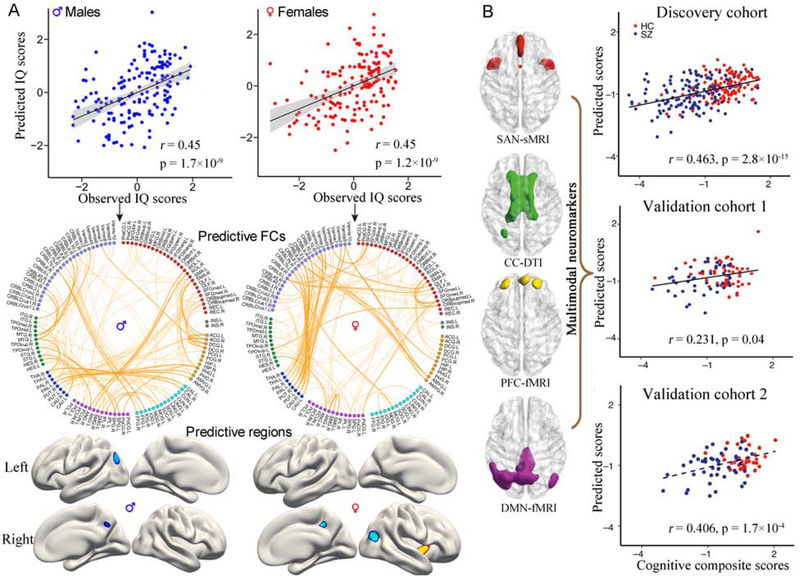Figure 4.
Using multimodal data to predict cognition promotes the biomarker identification. (A) Jiang et al. achieved an improved prediction performance of intelligence scores by integrating FCs and cortical thickness. More importantly, the study suggested that these two types of neuroimaging features provided unique evidence of the neurobiological correlates of intelligence from distinct perspective. Specifically, prediction with cortical thickness explored more gender difference in the lateralization of predictive brain regions, while prediction with FCs detected more gender difference in the specification of contributing functional networks. (B) Sui et al. predicted the cognitive composite scores for subjects from three independent cohorts based on neuromarkers derived from a supervised multimodal fusion approach (Adapted from ref. (86), and (87)).

